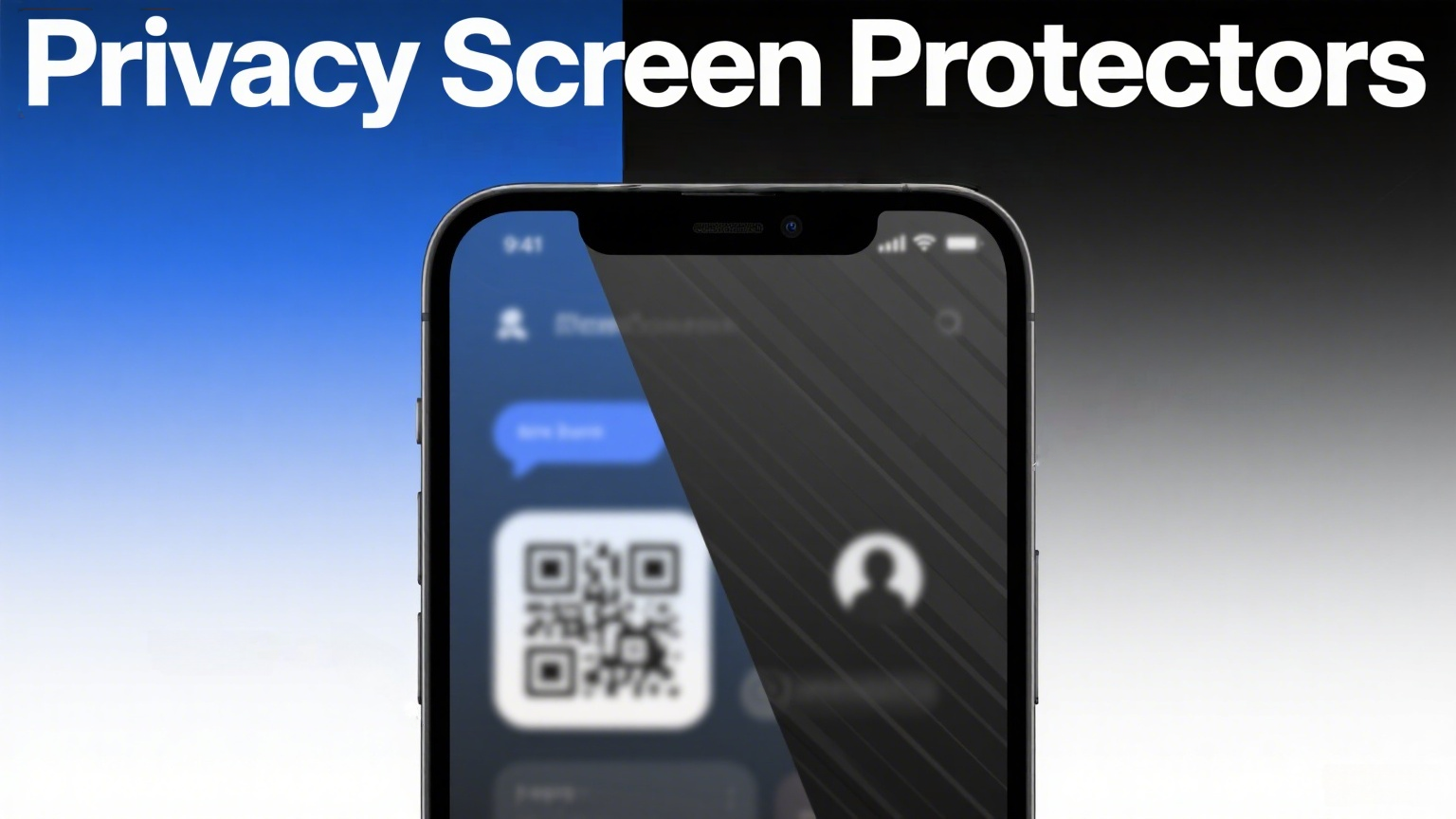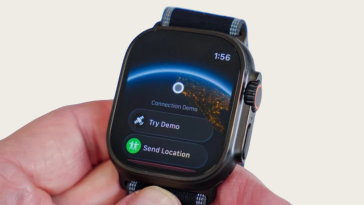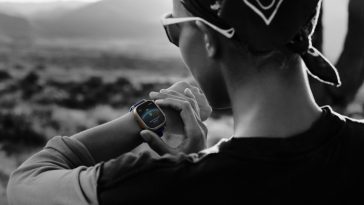In a world filled with digital devices, protecting our screen privacy—especially in crowded public settings—has become increasingly important. Privacy screen protectors (anti-peeping films) offer a practical solution, but their use involves more than just hiding information from side glances. Let’s dive into how these protectors work, real-life applications, and the impact they have on your visual comfort and device performance, all supported by international sources.
How Privacy Screen Protectors Work
Privacy screen protectors employ micro-louver technology, a sophisticated optical structure that acts like miniature vertical blinds layered onto your device’s screen. These louvers restrict light emission, allowing only light directed straight out from the screen to pass through. As a result:
- Direct View: When you look at your device straight on, the content remains vivid and clear.
- Side Angles: Move just a bit to the side (typically beyond a ±25° to 30° angle), and the content darkens, becoming unreadable to anyone nearby.
Some advanced privacy films also integrate polarizing filters which further narrow the visible angle by only permitting certain polarized light directions to pass, enhancing privacy without needing physical barriers.
Real-World Applications for Privacy Protection
Privacy screen protectors are especially valuable in situations where your screen could be exposed to others:
- Public Transportation (Subways/Buses): Safeguards sensitive chats, banking, or business activities from prying eyes during daily commutes.
- Open Office Environments: Prevents coworkers or visitors from unintentionally glimpsing confidential messages or documents, preserving both personal and professional privacy.
- Cafés, Airports, Libraries: Offers peace of mind in bustling public spots; you can read emails, review finances, or handle private matters without worry1.
By acting as a barrier against “visual hackers,” these films help keep your information truly personal.
Effects on Display Brightness and Color Reproduction
The core privacy mechanism—blocking off-angle light—impacts display quality in several ways:
| Aspect | Typical Effect with Privacy Film |
|---|---|
| Brightness | Noticeably diminished (may need to turn up screen brightness) |
| Color Reproduction | Colors may appear less vivid or slightly distorted |
| Sharpness and Clarity | Slight loss in fine detail, especially on lower-quality films |
| Touch Sensitivity | Occasionally reduced, depending on the protector’s thickness and design |
Users often find themselves increasing the brightness to compensate for the dimmer display. This not only strains battery life but can also amplify reflections or glare in certain conditions.
Could Privacy Films Cause Visual Fatigue?
While privacy protectors are not proven to cause permanent eye damage, several user comfort issues are widely reported:
- Increased Eye Strain: Duller and lower-contrast screens require the eyes to work harder, potentially leading to fatigue, dryness, or discomfort during prolonged use.
- Close Viewing Habits: Blurred or darkened visuals may prompt users to bring the screen closer, increasing near-eye strain—a recognized risk factor for visual fatigue.
- Product Quality Matters: Premium protectors can minimize these effects, but cheaper ones can further degrade brightness and clarity, making visual stress more likely.
- Interference with Blue-Light Blocking: Some privacy films also reduce blue light, which might be beneficial for sleep and eye health, though the reduction in overall brightness still poses a strain2.
Weighing the Pros and Cons
Advantages of Privacy Screen Protectors
- Enhanced Privacy and Security:
The primary benefit is preventing others from viewing your screen from side angles. This helps guard sensitive information, protect financial transactions, and keep private messages confidential in public places such as public transport, offices, cafés, airports, and more. - Visual Hacking Protection:
By limiting the visible angle, privacy films defend against “shoulder surfing” and visual hacking, protecting you from data thieves, scammers, and even nosy strangers nearby. - Physical Screen Protection:
Like standard screen protectors, they shield your display from scratches, smudges, and minor drops, helping extend the device’s lifespan and maintain its resale value. - Anti-Glare and Eye Comfort:
Many privacy protectors feature anti-glare coatings, making screens easier to view under bright light or direct sunlight, while also reducing reflections. Some also filter harmful blue light or UV rays, which may help reduce eye strain over long sessions3. - Increased Peace of Mind:
Privacy protectors can help you avoid awkward situations—such as accidentally revealing personal content or confidential work to strangers—by making side-viewing nearly impossible4. - Device Durability and Maintenance:
Tempered glass or advanced polymer constructions offer extra toughness. Some are engineered for easier cleaning and resist fingerprints or oils more effectively34.
Drawbacks of Privacy Screen Protectors
- Reduced Screen Brightness and Clarity:
Because privacy films block off-angle light, screen brightness and perceived vividness are often reduced. Users may need to raise their brightness settings, draining battery life faster. Fine details or small text may be harder to see. - Limited Viewing Angle:
While this enhances privacy, it can be inconvenient if you need to share your screen with friends, colleagues, or family. The restricted angle limits group viewing or collaborative tasks. - Potential Visual Fatigue:
Dimmer displays with lower contrast can cause your eyes to work harder, leading to faster eye strain, dryness, or discomfort during prolonged use—especially if the product reduces brightness significantly or if you bring the screen closer to compensate. - Screen Reflection and Smudges:
Some privacy protectors, especially low-quality models, may increase screen reflections and show more noticeable fingerprint smudges, requiring more frequent cleaning. - Possible Impact on Touch and Features:
Certain models may impair the sensitivity of touchscreens or interfere with biometrics like in-display fingerprint sensors and 3D Touch. Compatibility varies by brand and device. - Added Cost:
High-quality privacy films are more costly than standard protectors, adding to the overall expense of maintaining your device. Cheap brands may have more pronounced drawbacks, making an investment in reliable products essential. - Slight Display Distortion:
Poorly manufactured films may alter color accuracy, resulting in less vivid or slightly distorted displays, detracting from overall visual enjoyment5.
Comparison Table
| Feature | Advantages | Drawbacks |
|---|---|---|
| Privacy | Strong off-angle protection for screen data | Limits collaborative/work sharing |
| Eye Comfort | Reduces glare and may filter blue light34 | Lower brightness can cause eye fatigue |
| Display Quality | Scratch/impact protection | Dimmer display, slight loss of sharpness |
| Usability | Peace of mind in public spaces | Some touch/feature interference possible |
| Maintenance | Guards from fingerprints, easy to clean | Smudges/fingerprints may show up more |
| Cost | Extended screen life4 | Higher-quality protectors are pricier |
Tips for Users Concerned About Eye Comfort
- Choose premium, reputable brands for higher transparency and less distortion.
- Adjust device brightness thoughtfully—bright enough to reduce strain, but not excessively high in darkness.
- Take regular breaks (use the “20-20-20” rule).
- Maintain a safe viewing distance (approx. 30–40 cm).
- Clean your screen regularly to minimize glare and fingerprints.
Conclusion
Privacy screen protectors strike a balance between personal security and the quality of your visual experience. While they protect your sensitive information from wandering eyes in various real-life scenarios, they inevitably affect brightness, color fidelity, and, for some, visual comfort over time. Opting for quality products and cultivating healthy screen habits can help you enjoy the benefits of privacy protection while minimizing the drawbacks.
- https://www.ablison.com/pros-and-cons-of-privacy-screen-protector/
- https://pmc.ncbi.nlm.nih.gov/articles/PMC7813134/
- https://www.senseage.com/blogs/news/benefits-of-privacy-screen-protectors
- https://mydevia.com/what-is-a-privacy-screen-protector/
- https://viascreens.com/blog/what-you-need-to-know-about-privacy-screen-protectors/





 No products in the cart.
No products in the cart.